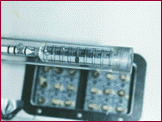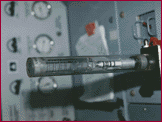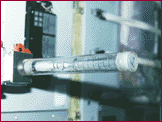




Objectives
The objective of the passive accelerometer system (PAS) is to measure, at various locations in the spacecraft, the small (10-6 mg) quasi-steady residual acceleration caused by a combination of atmospheric drag effects and the gravity gradient.
Shuttle-Mir Missions Approach Results
Higher acceleration values consistent with orbital attitude and estimated atmospheric drag. Lower values suprising. Explanation: simulations show that proximity to CG + quasi-inertial attitude can lead to periods of practically no proof mass motion when the drag accelerations are low enough (low average acceleration).
Publications Principal Investigators![]()
NASA-3
PAS was deployed on 10 separate occasions between October 20 and December 17, 1996. The acceleration measurement is obtained by recording the motion of a spherical proof mass along an oriented liquid-filled tube. Modified Stokes' Law uses trajectory and speed to calculate acceleration.
Successful operation. Measured accelerations up to 1.9 mg and as low as 5 X 10-2 mg. High and low accelerations measured at the same location but at different times.
J. Iwan D. Alexander and M.J. B. Rogers, Passive Accelerometer Measurements on Mir and STS-50, to be submitted to Microgravity Science and Technology, 1999.
J. Iwan D. Alexander
Case Western Reserve University
![]()
|
|
Curator:
Julie Oliveaux
Responsible NASA Official: John Uri |
Page last updated: 07/16/1999
.gif)